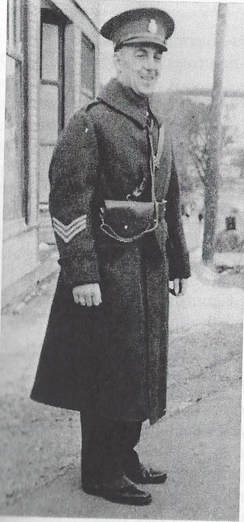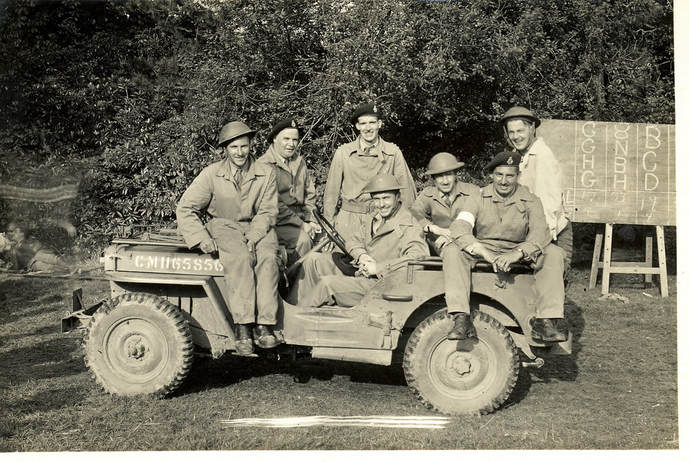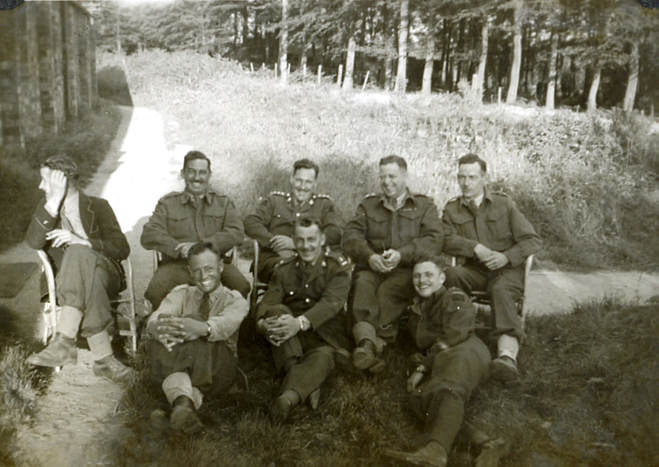
Unaware of the details of these conditions on the home front, the members of the 8th Hussars were eager to see action overseas. They had been mobilized as the 4th Canadian Motorcycle Regiment and patiently waited together at Camp Sussex for a call to battle. One officer particularly interested in the regiment seeing the front lines was Howard Keirstead. He is quoted saying "I think 99 percent of us want to see action and naturally we want to be together... can you tell us anything that will give us some hope & make us feel better?"
In the winter of 1940-1941 the decision was finally made in Ottawa to establish two armoured divisions and two independent tank brigades. The 8th Hussars would become part of the first of the two armoured divisions as the 5th Armoured Regiment. This news meant an end to the 4th Canadian Motorcycle Regiment and a return to the tank role that they had previously anticipated. They would move to Camp Borden in Ontario to be informed of what they should expect before going overseas.

Keirstead and his men climbed out of their tanks to stretch and make tea. They were taken by surprise and endured 45 minutes of ceaseless fire. Five men were killed in the attack and eight wounded. When Keirstead was informed there was no way to cross the river, he decided to move his squadron to a less exposed spot. They could still see the German vehicles moving away to safety and orders remained that they were not to be touched. After 8 days of combat the ban was finally lifted. Keirstead’s ‘B’ Squadron reported “a pathfinder destroyed, a self-propelled gun damaged, an 88 knocked out and its crew captured, several machine guns and an ammunition dump captured or destroyed.”
Not long after their ambush at Ceprano, the Hussars would face the Gothic Line; the last major German defence that remained in Italy. The heavily armed human-shield was situated along the Apennine mountain range, cutting the allies off from Northern Italy. The Germans used over 15,000 slave-labourers to create a wall of approximately 2,000 machine gun nests, bunkers, artillery positions, and anything else they could institute to repel the allied forces.
The 8th Hussars fought in the battle of Coriano on the Adriatic coast of the Gothic Line. Major Keirstead & Sergeant Fisher became separated from the others after moving down the Besengo slope to confront the enemy infantry. They endured heavy fire and were forced to drive into a deep, dry stream bed to take cover. It gave them temporary protection, but it also trapped them. The enemy crawled toward them, forcing the tanks to return fire. During the hours of the day the tanks could prevent bazookas from advancing close enough to inflict damage. The other allied tanks became pinned and were unable to help. Sergeant Fisher advised his crew to go out through the escape hatch beneath the tank and leave.
September 3rd, 1944. Major Howard Keirstead’s crew remained firm, convinced that they could wait out the attack. Germans approached with the bazookas and open fired, causing the men to abandon their tanks and race for cover. However, the enemy was waiting and as they ran for shelter they were peppered with bullets. Gunner Charlie Stevens was paralysed from the waist down and their driver E.R. Hilchey was killed. Keirstead fell, crippled with two bullets in his left arm and seven in his thigh. Lance-Corporal John Wentworth attempted to crawl towards him but was shot in the lower leg and forced to continue back to the bank where he was wounded again above his right knee.
Keirstead decided that although he was badly injured, he would attempt to make it back to the Canadian lines himself as Stevens and Wentworth were too severely injured to attempt it. September 4th, after hundreds of yards of painful progress, Keirstead heard the sound of approaching mortar shells and flattening out, he waited. The explosion caused shrapnel to tear three fresh wounds in his right leg, one in his shoulder, another in his head, and caused paralysis in his right arm. He continued to crawl but realized he was lost. He decided to make his way to a nearby farmhouse. However, the Italian family living there refused to treat his wounds as they did not want to show preference to either side.
He continued to crawl until he reached the next house. Unlike the first family, the Italian peasants occupying the second house helped him inside and cared for him. They were caught off-guard by the sound of footsteps as three Germans walked in. But, rather than shoot Keirstead, they cleaned him up, diluted wine to clean his wounds, fed him chicken broth and checked his temperature. They then carried him to an adjoining cow shed and placed him in bed. The three men were in fact German deserters. They cared for him as they all had the same wish – to arrive safely at the Canadian lines. However, on September 6th the Italian family intercepted an Irish ally jeep and they took the Germans prisoner and Keirstead to the Canadians.
Meanwhile, Sergeant Fisher had found Stevens and Wentworth. Stevens had suffered four bullets in the back and was given a shot of morphine. He did not even recognize Fisher when he came to his aide. Wentworth’s legs were both badly injured and Fisher quickly attended to them. He buried Hilchey but he could not reach Stevenson’s body as enemy fire continued. Help finally arrived on the night of September 9th. Wentworth was able to recover after months of medical attention but Stevens was not as fortunate. Major Howard Keirstead recovered after months of hospitalization. He was awarded a Mention in Dispatches to commemorate him for his outstanding service. Sergeant Fisher received the Military Medal for “highest devotion of duty” before the King in Buckingham.
Howard Keirstead returned to his home of Hampton, New Brunswick after the war. He continued his work with the family company and started a family of his own. He married Dorothy Patricia Cavanaugh on June 6th 1946 and they had two children; Charles Howard Keirstead, born April 4th, 1947; and Gregory Wayne Keirstead, born April 23rd, 1951. Howard Keirstead became the first elected Mayor of the Village of Hampton from 1967 to 1969. As well he was President of the Hampton Branch of the Royal Canadian Legion. He passed away on February 12th, 2002 at 85 years old, a Canadian War Hero.
If you would like to find out more about the Major Howard Keirstead or about the 8th Hussars in general, stop by the 8th Hussars Museum located in the historic Sussex Train Station along Broad Street.
